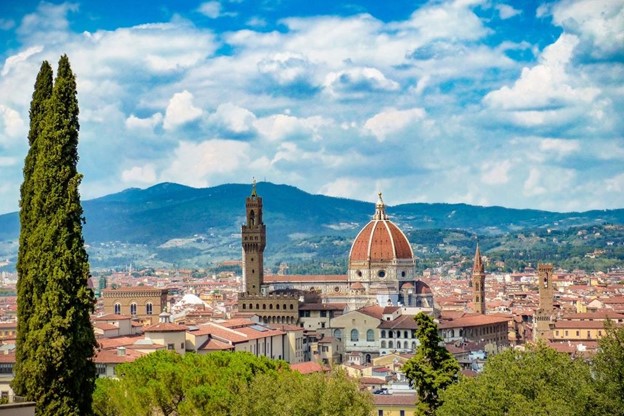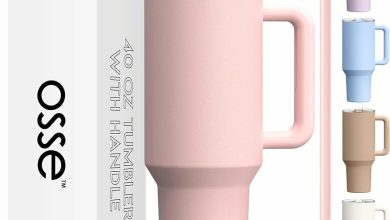Why Florence, Italy, Should Be Your Next Travel Destination

Florence, the capital of Italy’s Tuscany region, is a city that has captivated the hearts and minds of travelers for centuries. Known as the birthplace of the Renaissance, Florence is a treasure trove of art, culture, and history. With its stunning architecture, world-renowned museums, and vibrant street life, Florence offers a unique blend of the past and the present. Whether you are an art enthusiast, a history buff, a foodie, or simply someone looking to experience the charm of one of Europe’s most beautiful cities, Florence has something extraordinary to offer. Here’s why Florence should be your next travel destination.
The Birthplace of the Renaissance
Florence is synonymous with the Renaissance, the period of cultural rebirth that began in the 14th century and forever changed the course of Western history. The city was home to some of the greatest artists, thinkers, and architects of the time, and their legacy is evident throughout Florence. At the heart of the city lies the Florence Cathedral, or the Duomo, one of the most iconic symbols of the Renaissance. The cathedral’s magnificent dome, designed by Filippo Brunelleschi, was an engineering marvel of its time and remains one of the largest domes in the world. Climbing to the top of the dome offers breathtaking views of the city and the surrounding Tuscan countryside.
Next to the Duomo stands the Baptistery of St. John, famous for its bronze doors, known as the “Gates of Paradise.” Designed by Lorenzo Ghiberti, these doors are adorned with intricate reliefs depicting scenes from the Old Testament and are considered masterpieces of Renaissance sculpture. The Piazza del Duomo, where these monuments are located, is a testament to Florence’s architectural brilliance and the artistic genius of its residents.
The World’s Greatest Art Collections
Florence is home to some of the most important art collections in the world, housed in its numerous museums and galleries. The Uffizi Gallery, one of the most famous art museums in the world, boasts an unparalleled collection of Renaissance art. Here, you can see masterpieces by artists such as Leonardo da Vinci, Michelangelo, Botticelli, and Raphael. Botticelli’s The Birth of Venus and Primavera are two of the gallery’s most celebrated works, capturing the beauty and ideals of the Renaissance in Florence.
Another must-visit museum is the Accademia Gallery, where you can admire Michelangelo’s David, one of the most famous sculptures in the world. Standing over 14 feet tall, the statue of David is a symbol of strength, beauty, and humanism, reflecting the ideals of the Renaissance. The museum also houses other works by Michelangelo, as well as paintings by Florentine artists of the 14th and 15th centuries.
The Bargello Museum, located in a former medieval prison, is another gem of Florence. The museum’s collection includes an impressive array of Renaissance sculptures, including works by Donatello, Verrocchio, and Michelangelo. Donatello’s David, the first freestanding nude sculpture since antiquity, is a highlight of the collection.
For those interested in more contemporary art, the Museo Novecento offers a fascinating glimpse into 20th-century Italian art. Housed in a historic building in the Piazza Santa Maria Novella, the museum’s collection includes works by Italian artists such as Giorgio de Chirico, Amedeo Modigliani, and Gino Severini.
The Beauty of Florence’s Architecture
Florence’s beauty is not confined to its museums and galleries; the entire city is a work of art. The city’s streets are lined with stunning buildings, from medieval towers to Renaissance palaces, each with its own story to tell. The Ponte Vecchio, the oldest and most famous bridge in Florence, is a symbol of the city. Spanning the Arno River, the bridge is lined with jewelry shops, a tradition that dates back to the 16th century. Walking across the Ponte Vecchio at sunset, with the golden light reflecting off the water, is a quintessential Florentine experience.
The Palazzo Vecchio, Florence’s town hall, is another architectural masterpiece. Built in the 13th century, the palace served as the seat of government for the Republic of Florence. Today, it houses a museum that showcases the history of Florence and the Medici family, who were the city’s most powerful and influential rulers. The Palazzo’s interior is as impressive as its exterior, with grand halls, ornate ceilings, and works of art by Michelangelo and Donatello.
Florence is also known for its beautiful squares, or piazzas, which are the heart of the city’s social life. The Piazza della Signoria, located in front of the Palazzo Vecchio, is one of the most famous squares in Florence. The square is home to a collection of statues, including a replica of Michelangelo’s David, and is surrounded by cafes and restaurants where you can sit and watch the world go by.
Another iconic square is the Piazza della Repubblica, which marks the center of modern Florence. The square is surrounded by elegant cafes, shops, and hotels, and is a popular meeting place for locals and tourists alike. The nearby Piazza Santa Croce is home to the Basilica of Santa Croce, the largest Franciscan church in the world and the burial place of some of Florence’s most illustrious citizens, including Michelangelo, Galileo, and Machiavelli.
A Culinary Capital
Florence is not only a feast for the eyes but also a paradise for Florence food tours. Tuscan cuisine is known for its simplicity, fresh ingredients, and robust flavors, and there is no better place to experience it than in Florence. Start your culinary journey with the city’s most famous dish, bistecca alla fiorentina, a thick, juicy T-bone steak grilled to perfection and seasoned with just a sprinkle of salt and a drizzle of olive oil. This dish is a carnivore’s dream and is best enjoyed with a glass of Chianti, the famous red wine from the nearby vineyards of Tuscany.
Another must-try dish is ribollita, a hearty vegetable and bread soup that is a staple of Tuscan cuisine. Made with seasonal vegetables, beans, and stale bread, ribollita is a comforting and flavorful dish that showcases the resourcefulness of Tuscan cooking. For a lighter option, try pappa al pomodoro, a tomato and bread soup that is bursting with the flavors of ripe tomatoes, garlic, and basil.
Florence is also famous for its street food. One of the most popular street foods in the city is lampredotto, a sandwich made from the fourth stomach of a cow, slow-cooked in broth and served on a crusty roll with green sauce or salsa verde. While it might sound unusual, lampredotto is a beloved Florentine delicacy and a must-try for adventurous eaters.
For dessert, indulge in cantucci, crunchy almond biscuits that are traditionally dipped in vin santo, a sweet dessert wine. Or try a slice of schiacciata alla fiorentina, a light and fluffy cake flavored with orange zest, which is a popular treat during Carnival season.
Florence is also a city of markets, where you can sample and buy local produce, meats, cheeses, and wines. The Mercato Centrale, located in the San Lorenzo district, is a food lover’s paradise, with stalls selling everything from fresh pasta to truffles. Upstairs, the market has a food court where you can sample a variety of Tuscan dishes, all made with fresh, local ingredients.
A City of Fashion and Craftsmanship
Florence is not just about history and art; it is also a city of fashion and craftsmanship. The city has a long tradition of leatherwork, and you can find some of the finest leather goods in the world in Florence’s shops and markets. The San Lorenzo Market and the surrounding streets are filled with stalls selling leather jackets, bags, belts, and shoes, all made by local artisans.
For those interested in high fashion, Florence is home to some of Italy’s most prestigious fashion houses, including Gucci and Salvatore Ferragamo. The Gucci Garden, located in the Palazzo della Mercanzia, is a museum and boutique dedicated to the history of the iconic brand, with exhibitions showcasing vintage Gucci designs as well as contemporary fashion. The Salvatore Ferragamo Museum, located in the Palazzo Spini Feroni, offers a fascinating look at the life and work of the legendary shoe designer, with exhibits featuring some of his most famous creations.
Florence is also famous for its gold and jewelry, and the Ponte Vecchio is the best place to shop for these treasures. The bridge is lined with jewelry shops that have been passed down through generations, offering everything from intricate gold necklaces to exquisite diamond rings.
A Gateway to Tuscany
Florence is not only a destination in itself but also the perfect gateway to exploring the rest of Tuscany. The region is known for its rolling hills, picturesque vineyards, and charming medieval towns, all within easy reach of Florence. A short drive or train ride from the city takes you to the vineyards of Chianti, where you can sample some of the world’s finest wines and enjoy the stunning scenery.
The town of Siena, with its well-preserved medieval architecture and famous Palio horse race, is another must-visit. The Piazza del Campo, the heart of Siena, is considered one of the most beautiful squares in Italy, and the town’s Gothic cathedral is a masterpiece of art and architecture.
The hilltop town of San Gimignano, known for its medieval towers and beautiful views of the Tuscan countryside, is another popular day trip from Florence. The town’s narrow streets, lined with shops selling local products like saffron and Vernaccia wine, are a delight to explore.
Conclusion: Florence Awaits
Read More From Techbullion And Businesnewswire.com





